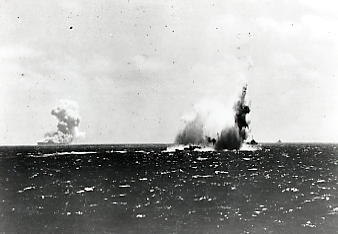caramut wrote:
And today's dumb question from someone who knows nothing about the details is:
At 4 miles range, in submerged daylight attack with a target ship following normal patterns to avoid the risk of torpedo attack and all the variables of current and thermal layers causing fluctuations in torpedo speed and accuracy, and the sub being just a poofteenth off in sighting when firing, what were the chances of hitting a ship a few hundred feet long?
No dumb at all. That is real hard one

The U-boatwaffe would knew it to few percentages. The knowledge from them is somewhere deep in Norfolk, St. Petersburg, and London archives.
I take the bull by the hornes and try. Don't laugh at me.
My guesses:
- That is very long firing distance for WW2-era submarine. Around 7 minutes torpedo run even with the latest, warmed up late-war electric torpedoes, almost at their max range.
- U-boat captain would surely seek better firing position, if escorts or speed of target would not prevent it. Only high value target would had been tried with that kind of firing situation in early/mid-war.
- Only diminutive proportion of U-boat launches would be made from distance like that before 1943.
- Even 1000m mistake in estimation of range would mean that even slow 11 knot freighter cover around 3 times its waterline lenght at same time torpedo needs to cover that 1000 metres.
With very, very good crew and captain:
My guess is that with 1 torpedo theoretically 33%, cut that half in real world.
With 4 torpedo spread, if the target is not making its turn right during the torpedoes running time 1 hit with 2/3 propability
- but because all ships did zig-zag - cut that in half.
4 torpedoes launched. 1 hit every third attempt in such scenario.
4 miles is very much for submarine without true range finding equipment and firing 30kn electric torpedoes. One quarter / one half of the range asked would be much more representative of firing solutions U-boats took, when they had the opportunity to manouvre.
Mark V
Disclaimer: I did not want to dwell on this calculation several days. So this is what 10 minutes of thinking got me - and i don't even dream to claim it is somewhere near the truth.
